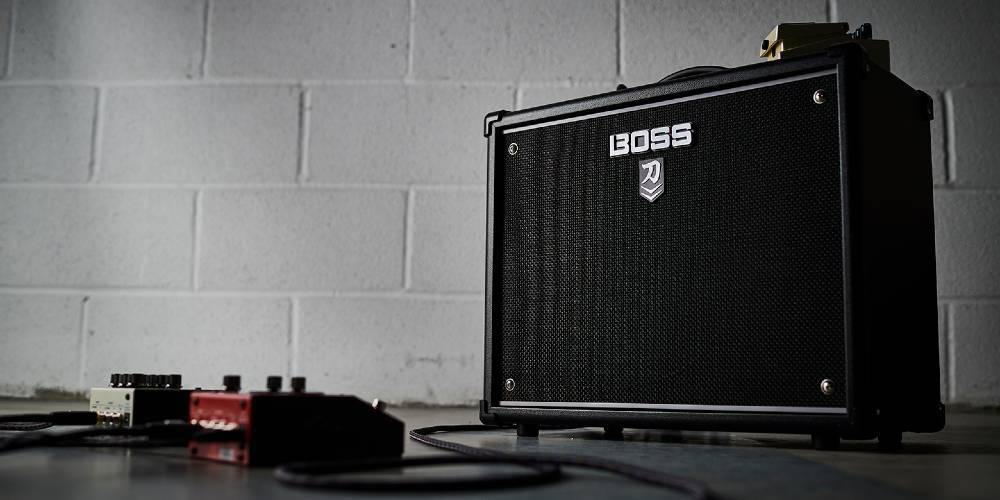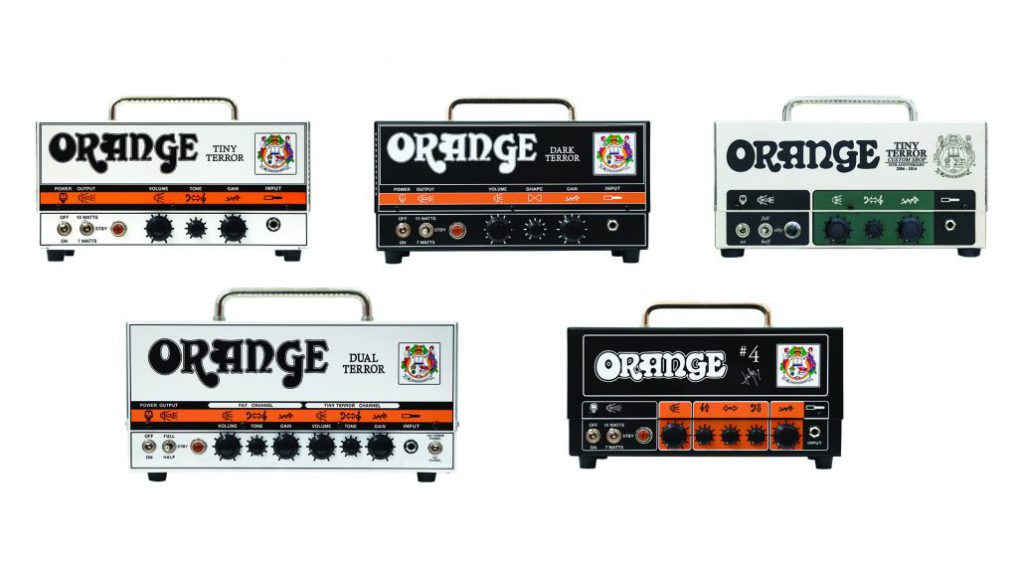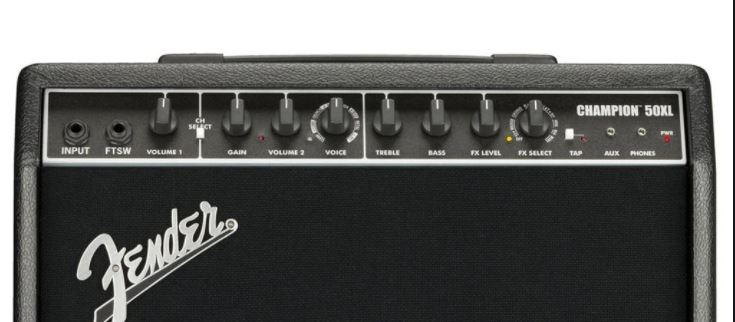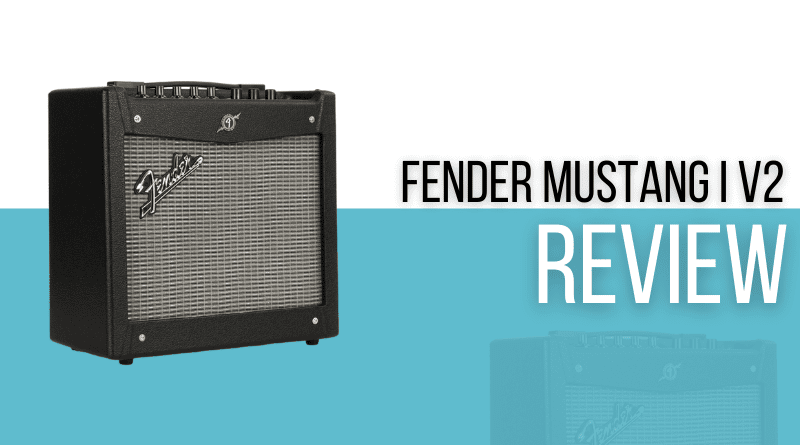Are you just starting out on electric guitar? Or are you on the hunt for a great practice amp that can do it all for just over $100? Fender’s Mustang I V2 might be exactly what you’re looking for.
Fender’s classic line of amps are almost as highly regarded as their legendary guitars. They’ve created some of the most iconic tube amps ever produced, but one great thing about the company is they haven’t stood still when it comes to developing new and exciting products. The Mustang I V2 is a prime testament to that – a great practice amp packed with features, and a street price under $100.
The Mustang is much more than just a cheap amp that’ll get you by with a few low-quality tones. Surprisingly enough for the price, it models many legendary Fender amps in addition to having a wide range of built-in effects (even a tuner). Topping off the package is the ability to use offline software to tweak things even more to your liking.
It may be a minor detail, but it actually looks pretty cool as well! The Mustang struck us right off as almost a mini Hot Rod, with many of the classic Fender looks we’ve all grown to recognize over the years.
Does the Fender Mustang I V2 have enough power under the hood to make it one of the best practice amps we’ve come across? We’d definitely say Yes. Check out our full review below to get all the details…
Check out the price and reviews at Amazon or Sweetwater.
Read more about our review process.
- 20 watts
- 8” Fender Special Design speaker
- 17 amp models and 24 onboard presets
- Reverb, delay/echo, tremolo, phaser and other effects
- USB connectivity for audio recording output
Contents
Who Is This For?
The Fender Mustang I v.2 is oriented towards the beginner player looking for a quality 20-watt practice amp. Loaded with 24 factory presets including a wide array of amps and effects, a beginner can easily find a sound to base their personal tone on. It’s incredibly easy to use, and the Fender Fuse software is very easy to work with.
This doesn’t mean that a more experienced player will have no value with this little amp. It can be a great practice tool to have at home while your big heavy tube amp sits at the rehearsal space.
Appearance
First of all, what does it look like? There’s no doubt that this is a Fender amp. It looks to be a combination of a classic Fender Tweed amp and a Fender Silverface amp. To give you an idea:

It weighs around 17lbs. It’s very light and portable and has a nice carrying handle that feels very sturdy. Its dimensions are 7.6” x 15.5” x 14.5”. It’s small and even fits in a suitcase. This makes it easy to carry around.
The main cabinet is made out of plywood, which is much better than MDF. Grill-cloth is made out of the standard fabric Fender uses for all its Silverface amps. The classic chrome Fender-logo is proudly presented on the face. There is a Mustang logo on the top of the face, right where the logo on a Tweed amp would be.
The tolex is unfortunately not real and looks to be of some sort of vinyl or plastic. It’s very sturdy though, and small dings won’t even show up.
The knobs look similar to the UFO-shaped knobs found on the Silverface amps. These knobs are sturdy and feel nice to turn. Not too light, not too heavy, just right.
The amp looks great and unique. It obviously resembles some of Fender’s most classic amps, and this is a very creative choice of design. It looks a lot better than other practice amps in this category in my opinion, and it absolutely fits within Fender’s amp catalog.
The newer Fender GT models are sleeker and look more like classic Blackface Fender amps, so that’s cool to see.
Having an amp that looks good can be a great selling point, especially for a beginner who might not really know what they want yet and needs a versatile first amp.
Features

Don’t underestimate it for its size, because the amp is very powerful, even beyond a typical practice amp. It comes with 20 watts of solid state power, which is easily enough for home use and even mic’d gigs. I know this from personal experience. I played my first 3 or 4 gigs with just this amp. The amp was obviously mic’d, because 20 watts of solid-state through an 8” speaker isn’t enough to keep up with a band.
As I said before, you can save 24 individual presets, which will most likely be more than enough. The amp has a dead simple layout: gain, volume, treble, bass, and a master volume. There are also knobs for preset navigation, modulation, and delay/reverb. The amp also comes with a built-in tuner, which is accessed by holding down on the ‘tap’ button.
There’s an input for a single-switch footswitch, which Fender also makes. Also pretty essential with these sorts of practice amps: a headphone jack. With this, you can just plug in headphones and play all night without disturbing the neighbors. It’s also got a line input, so you can play along to songs and backing tracks from your phone or laptop. Unfortunately, it doesn’t support Bluetooth, so you’ll have to use wired headphones and aux-cables.
It has a USB port for using the Fender Fuse software and even recording. The amp also comes with a demo version of Ableton 10 Live to get you started recording your own demos.
The amp can model a whopping 17 different amp models including:
- ’57 Deluxe – (Fender ’57 Deluxe)
- ’59 Bassman – (Fender ’59 Bassman)
- ’65 Twin Reverb – (Fender ’65 Twin Reverb) British ’60s – (Vox AC30)
- British ’80s – (Marshall JCM800)
- American ’90s -(Mesa Boogie Dual Rectifier) Super-sonic – (Fender Supersonic 22)
- Metal 2000 – (Peavey 5150)
- ’60s Thrift – (Sears 1964 Silvertone) British ’70s – Marshall 1959SLP Plexi British Color – (Orange Custom Shop) British Watts (HiWatt 100 DR103)
- ’57 Champ – (Fender ’57 Champ)
- ’57 Twin – (Fender ’57 Twin)
- ’65 Deluxe Reverb – (Fender ’59 Deluxe Reverb)
- ’65 Princeton Reverb (Fender ’65 Princeton Reverb) Studio Preamp (No amp modeling)
Also a wide array of modulation and reverb/delay effects including:
- Flanger
- Chorus
- Pitch Shifter
- Compressor
- Spring Reverb
- Tape Delay
On top of that, the Fender Mustang comes with a plethora of high-quality pedals built in, like:
- Overdrive
- Fuzz Distortion
- Auto-Wah
This could be confusing or even overwhelming for a beginner, and maybe even a bit too much for a more experienced player. However the wide array of amp models are sure to keep you busy for hours experimenting with different amps, effects, and pedals.
It’s important for an amp to have all the features you desire, and it’s very nice that there’s such a range of options for amp models, effects and more on such a small, affordable amp. Most beginners will want to just plug-and-play because of the lack of experience in dialing in tones, so this many options is a major pro of the Fender Mustang.
Controls

As I said, the amp doesn’t come with an overwhelming amount of knobs or switches. It’s very usable with just the controls on the amp itself and utilizing the Fender Fuse software is absolutely optional (though, of course, the software does make things easier). The only thing I would say it misses is a ‘mid’ knob, which can be pretty vital for creating a good tone. Luckily though, the amp models come with a pre-set mid-setting. So the British amp models will have plenty of mids, whereas the American ’90s amp models are fairly scooped.
Presets are easily edited with the knobs on the face of the amp, and then saved with the Save button on top.
There are 24 fully customizable factory presets that can all be accessed right on the amp. There are three banks of eight presets. You can see which bank you’re on by looking at the color of the LED light. Green = bank 1, Orange = bank 2, and Red = bank 3.
With the Fender Fuse software, you can also put any preset on any slot regardless of what amp name is next to it on the amp. So it’s completely possible to fill the entire amp with just ’65 Princeton Reverb presets if you wanted to.
The USB connectivity opens you up to a whole world of tweaking. The USB port plugs straight into your computer (making it one of the easiest ways to achieve this). After downloading the driver and the app, you’re ready to start playing around with the software. The Fender Fuse software is easy to use, with big buttons and eye-catching visuals. The digital amp-face will match its appearance with that of the amp you’re simulating. So the British ’60s will actually look like a Vox amp, and the American ’90s will look like a Dual Rectifier.
Easy to use controls are crucial for an amp in this price range. Some of the largest and most expensive amps are known for being kinda hard to work with, but those amps are usually only bought by guitarists who absolutely know what they’re doing.
A beginner doesn’t want a piece of gear with a huge learning curve, as it’ll be discouraging. The Mustang is easy to work with, and with a wide array of amps and effects, easy to get a tone you like.
Performance/Sound
None of this matters if it doesn’t sound great, and unfortunately… that was our biggest gripe with the Fender Mustang.
The tiny 17lb plywood body houses an 8″ Special Design Fender speaker. The speaker is very dark and muddy, but has a surprising (and overwhelming) amount of bass for such a tiny speaker. I had a hard time getting a good sound through the speaker and found that it didn’t sound much better when it’s mic’d.
This is very common with these smaller practice amps. The same criticism is often levied at the Line 6 Spider range. All the time and effort goes into cramming it full of features, but not bothering to make the speaker actually sound adequate. This is usually the reason why I tell people to save a little longer and buy a Boss Katana 50, which has a ton of features and houses a decent 12″ speaker.
However, putting the speaker off to the side for a moment, let’s focus on the internal sound quality. The Mustang is obviously a solid-state amplifier, so getting that tube response is very difficult. I do have to say that it does it pretty well. It replicates that ‘tube warmth’ of say a ’57 Deluxe well, and is very dynamic.
It does this better on the clean and low-gain amp models I would say. The high-gain amp models such as the Metal 2000 are not very tight and have quite a lot of boomy bass, which is the exact opposite of what you want for a modern overdrive/distortion sound. That, combined with the lack of a ‘mid’ knob, kind of limits what this amp can really do beyond the factory presets. Some improvements are possible via the Fender Fuse software, but it involves a lot of effort.
Delivering good sound is exactly what an amp should do. If you’re gonna record with the Fender Mustang, I highly recommend using the USB connectivity to the Fender Fuse software or the headphone jack instead of miking it. The sound from either of those is much better than from the irredeemable speaker.
Other Amps to Consider
We’re looking for an affordable practice amp that’s versatile and easy to work with.
Boss Katana 50 Mk II

Check out our head to head here, but suffice to say – this is a no-brainer. Boss is the daddy when it comes to pedal-based effects, and putting them all in a cheap combo was a master stroke.
There’s a good reason this combo amp has gained a bit of cult following. Everything from the range of amps, effects, and pedals, to the sound is good, and it’s extremely affordable as well. It’s absolutely loud enough to rehearse and gig with (even with a loud metal drummer).
This is the amp that kills all other amps under $300. If you’re willing to pay extra, there’s no other amp we’d recommend as highly.
Check out the price and reviews at Amazon or Sweetwater.
Orange Micro Terror/Dark Terror

Now, let me start off by saying this amp is not as versatile as the Fender Mustang or the Katana (lacking even basic effects like reverb), but it’s a great practice amp if you want to start using pedal-based effects.
These tiny little tube-driven heads have 20 watts of solid-state power, so there’s plenty of clean headroom for home use. The only catch is you have to hook it up to a cabinet for it to work.
Luckily, Orange swoops in with a special 1×8” cabinet for $100 that sounds pretty adequate.
But, if you don’t want to use that, we recommend the Harley Benton G112 Vintage cabinet. A very cheap ($130) cabinet with a real Celestion Vintage 30.
Read our full Orange Micro Terror review here.
Fender Champion 50XL

You might say it’s a bit strange to include this, since it’s also a Fender combo amp, but the Fender Champion 50XL is very similar in a lot of ways. Differences being, it has more power (50w solid-state dwarfs the Fender Mustang’s 20-watt output), it’s transistor powered instead of digital, and it has a much better 12-inch speaker.
This is a great option for people who want a better sound and who could do with fewer features. It does have digital capability and some built-in effects, except it’s all on the face of the map instead of in something like the Mustang’s Fender Fuse software.
Final Thoughts
The most important aspects of the Fender Mustang 1 V.2.
- Absolutely looks like a Fender amp
- Lots of features
- Wide range of quality amp models and effects
- Easy controls
- Lots of tonal options
- Small and lightweight
- Fender Fuse Software is easy to use
- Bad sounding 20-watt speaker, but decent sound using USB connectivity or headphone out
So, is the Fender Mustang 1 V.2 a good practice amp? Yes. Is it a good amp for anything other than practice? No.
These amps are perfect for beginners who just want to get a decent quality sound out of their electric guitar and learn how to work an amp. But once they get more experienced, they’re probably wanting to get something of higher quality fairly quickly.
My final verdict is that the Fender Mustang is the best sub-$150 (depending on where you get it) guitar amp you’ll find in a music store. Does that mean it’s great? Unfortunately not.


